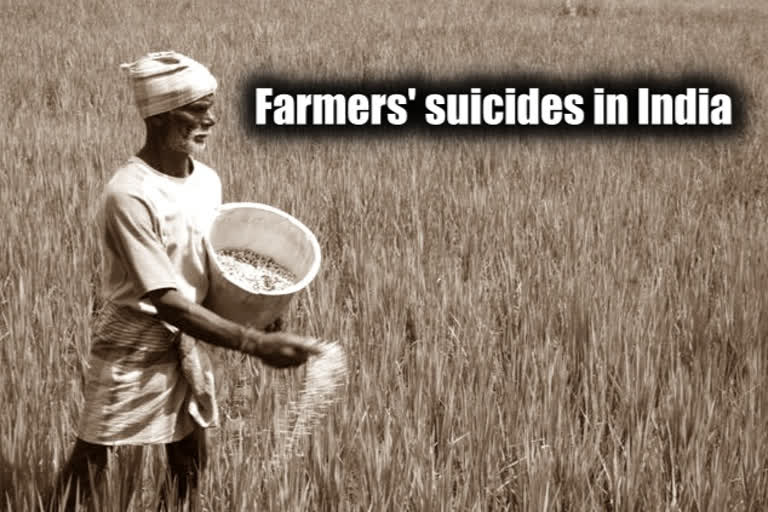Hyderabad: Successive governments in the country over the past twenty-five years have been failing in alleviating the troubles of the farmers. It is heart-rending that this important segment of our society, feeding 135 million of our nation and providing food security, is losing hope and resorting to forced deaths.
According to the latest National Crime Agency (NCRB) data, 11,379 farmers and farm labourers committed suicide across the country in 2016. The average number of farmers committing suicide every day is at an average of 31 per day and 948 per month.
The rate of suicides is declining compared to 2014 (12,360) and 2015 (12,602). Maharashtra tops the list of farmers' deaths for the last several years with 3,661 suicides in 2016, followed by Karnataka (2,078), Madhya Pradesh (1,321) and Andhra Pradesh (804).
The report says that the rate of suicides of farmers has decreased to 21%, at the same time, the farm laborers' deaths have increased by ten percent. The NCRB specifically used to mention in their past reports the specific reasons (such as crop loss, loss of income, loans, family problems, and illness) for the forced deaths of the farmers.
If borrowed loans were the reason, particulars of such loans together with the socio-economic conditions of the farmers were mentioned. This time, though the report has included more categories for data integrity, these particulars have not seen the light of the day. The report released sans the particulars of West Bengal, states that 6270 farmers and 5109 farm laborers have ended their lives.
Since the NCRB started its compilation, 3,30,407 farmers' suicides have been recorded in the country between 1995 and 2016. As per the prediction of IAS officer, Mr. PC Bodh, by 2020, four lakhs farmers may end their lives forcibly if the same trend continues.
There seems to be no end to the troubles and travails of the farmers, who work day and night, unmindful of rain or summer to raise crops.
Due to the failure of successive crops, they are ending their lives forcibly, under the burden of bank loans, lack of support price, storage facilities, etc.
Maharashtra, which saw 15,356 deaths of farmers between 2013 and 1818, three months ago, the devastation caused by famine took the lives of farmers.
Now, excessive floods are inundating the ripe crops. Farmers all over the country, not just in Maharashtra have the same plight!
Farmers associations are outraged over wrongly reporting the farming related suicides this year as 280, while it is at least a thousand each year. Farm laborers' suicides are far higher than those of farmers in 17 states, revealing how depressing rural economic conditions are.
Besides, a close review is necessary to know to what extent the employment guarantee scheme brought in, to help the daily wage farm laborers, has been successful at the grassroots level. The assurance given that the farmers' income will be doubled by 2022, should be supported by a comprehensive action plan.
The Center has launched a scheme to provide a cash subsidy of Rs 6,000 to farmers every year. A Chief Ministers' Committee was constituted to formulate and implement an action plan for the implementation of the reforms by evaluating changes in the marketing of agricultural products, contract farming practices, and ways of raising private investment.
The future of the task force formed four months ago when Fadanavis was the chief minister of Maharashtra, is uncertain. It is noteworthy that no regard is paid to the appeals of many farmers' associations to convene a special session of Parliament to evolve and implement an action plan to help the Indian farming community.
Statistics show that 80 per cent of farmers who took loans in 2015 were borrowing from banks and microfinance companies. The solution to the problems of peasant cooperative credit is always far from the target. The negative impact of climate change on small farm holders is adding to these institutional challenges.
Mumbai IIT researchers impress the need for a climate-appropriate farming plan for each district, apart from the state or regional level. Scientists are suggesting that the flood-resistant Pokkali paddy variety of Kerala should be preferred in other flood-prone regions also. It is time to connect agriculture with science and recognize that the farmer's life is vital to the food security of the nation.



